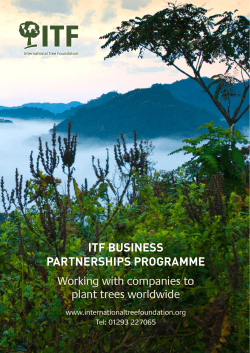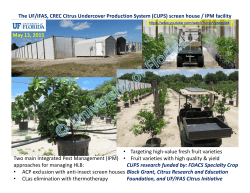
File
Name: ________________________ Period: _________________ Date: __________________ Life – Plants Based on the BBC Life DVD 1. Plants need food and water to survive, like animals. What additional need do plants have that makes them different? Finding Sunlight 2. Why is the forest floor the hardest plants for young plants to thrive? 3. Describe how each of these plants has adapted to accessing sunlight in a dense forest: a. Ivy – b. Cat’s Claw – c. Passion Flower – 4. Air plants (also called epiphytes) are able to survive on the branches of tall trees. They never actually touch the ground. Explain how they absorb water and nutrients. Accessing Nitrogen 5. Bogs are wetlands with very little nitrogen available for plants. Explain how each of these plants has overcome this problem: a. Sundew – b. Venus Flytrap - Accessing Nitrogen 6. Flowers are an effective way of attracting insect pollinators, but they are very delicate. How does the Richea Honeybush protect its stamens from the cold? Written by James Dauray http://www.aurumscience.com/life.html Page 1 7. The sandhill milkweed has almost an adversarial relationship with monarch butterflies. Describe it, including the interactions between the plant and the adult and larvae butterflies. 8. Heliconia has modified leaves that protects the nectar of its flowers deep inside. What animal can access it, and why does the plant have such a tight hold its lifestyle? Spreading Seeds 9. The purpose of seeds is to send the plant offspring as far away from the parent as possible, so that any competition is avoided. Describe how each of these species accomplishes this: a. Brunsvigia – b. Alsomitra – c. Saguaro Cactus – Surviving Harsh Ecosystems 10. The Dragon’s Blood Tree lives in an extremely dry archipelago in the Indian Ocean. How does its shape help it to survive? 11. The desert rose is so well adapted to dry climates it can even grow on the surface of a rock. Describe one of its adaptations. 12. Mangrove trees endure a regular flooding of salt water. What adaptation is present in their roots, and how does it help them survive? 13. What exactly happens to broadleaf trees in temperate climates as winter approaches? 14. How are evergreen trees able to keep their leaves throughout the year, even during a cold, dry winter? 15. Bristlecone pines live in one of the most inhospitable places in the world for plants – they experience bitter, freezing winds most of the year. Describe how they are different than other plants and able to survive here Plants and Animal Life 16. What is the most successful flowing plant? 17. What two types of grasses are extremely important in feeding human civilization? 18. One of the last statements made in this documentary is that “plants fuel the diversity of life on Earth.” Explain why this is true.
© Copyright 2025





















